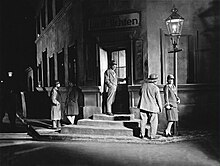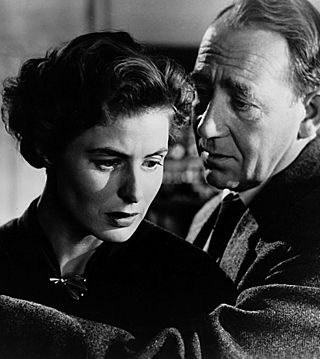
Mathias Wieman was a German stage-performer, silent-and-sound motion picture actor.

Lissy Arna was a German film actress. She appeared in 63 films between 1918 and 1962. She starred in the 1931 film The Squeaker, which was directed by Martin Frič and Karel Lamač. She entered U.S. films in 1930 under the direction of William Dieterle, appearing in German-language versions of American films.
The Duty to Remain Silent is a 1928 German silent drama film directed by Carl Wilhelm and starring Marcella Albani, Vivian Gibson, Angelo Ferrari. It was based on a novel by Friedrich Werner van Oestéren. The film's art direction was by Max Heilbronner. It premiered on 8 February 1928.

The Catwalk is a 1927 German silent drama film directed by Gerhard Lamprecht and starring Lissy Arna, Jack Trevor, and Andreas Behrens-Klausen. It was based on the 1890 novel of the same title by Hermann Sudermann. The film premiered at the Capital am Zoo in Berlin. Art direction was by Otto Moldenhauer.
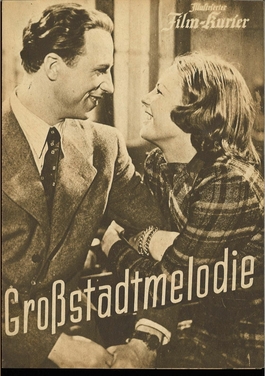
Melody of a Great City is a 1943 musical drama film directed by Wolfgang Liebeneiner and starring Hilde Krahl, Werner Hinz and Karl John. A young woman moves to Berlin to work as a press photographer.
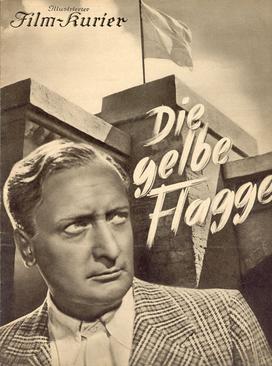
The Yellow Flag is a 1937 German drama film directed by Gerhard Lamprecht and starring Hans Albers, Olga Chekhova and Dorothea Wieck. It was shot at the Babelsberg Studios in Berlin. The film's sets were designed by the art director Ludwig Reiber. Location filming took place in Yugoslavia.

The Soaring Maiden is a 1931 German comedy film directed by Carl Boese and starring Lissy Arna, S.Z. Sakall and Dina Gralla. It was shot at the Halensee Studios in Berlin. The film's sets were designed by the art director Franz Schroedter.
Children of the Street is a 1929 German silent drama film directed by Carl Boese and starring Lissy Arna, Heinrich George and Rudolf Biebrach.
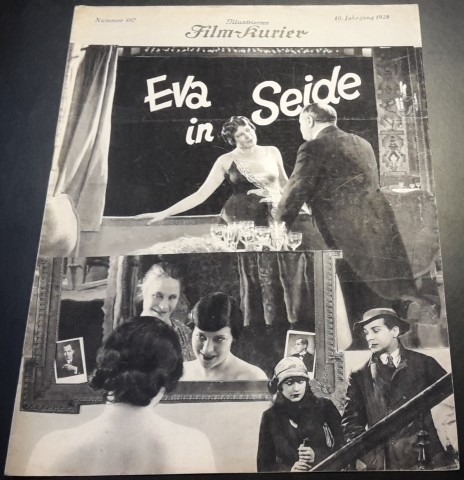
Eva in Silk is a 1928 German silent film directed by Carl Boese and starring Lissy Arna, Walter Rilla and Margarete Kupfer. It was shot at the National Studios in Berlin. The film's sets were designed by the art director Karl Machus.

Poison Gas is a 1929 German silent drama film directed by Mikhail Dubson and starring Hans Stüwe, Lissy Arna and Alfred Abel. It is based on the play Poison Gas over Berlin by Peter Martin Lampel. The film's sets were designed by the art director August Rinaldi.
Tough Guys, Easy Girls is a 1927 German silent comedy film directed by Carl Boese and starring Lissy Arna, Gustav Fröhlich and Eugen Burg.

The Eleven Devils is a 1927 German silent sports film directed by Zoltan Korda and Carl Boese and starring Gustav Fröhlich, Evelyn Holt and Lissy Arna.

Inge and the Millions is a 1933 German comedy film directed by Erich Engel and starring Brigitte Helm, Carl Esmond, and Paul Wegener. Produced by UFA, it was shot at the Babelsberg Studios in Potsdam. The film's sets were designed by Otto Erdmann and Hans Sohnle. Location filming took place in Berlin and around Lake Constance.

Lemke's Widow is a 1928 German silent comedy film directed by Carl Boese. It was shot at the National Studios in Berlin. The film's sets were designed by Karl Machus. The film was remade in 1957 with Grethe Weiser in the title role.

Painted Youth is a 1929 German silent drama film directed by Carl Boese and starring Toni van Eyck, Wolfgang Zilzer, and Olga Limburg. It was shot at the National Studios in Berlin. The film's sets were designed by Karl Machus.

The King's Prisoner is a 1935 German historical comedy film directed by Carl Boese and starring Michael Bohnen, Paul Kemp, and Susi Lanner. It is based around the development of Meissen porcelain during the eighteenth century, particularly the role of the alchemist Johann Friedrich Böttger. It was shot at the Bavaria Studios in Munich. The film's sets were designed by the art director Max Seefelder.

The Bordello in Rio or The Women's House of Rio is a 1927 silent drama film directed by Hans Steinhoff and starring Vivian Gibson, Albert Steinrück and Hans Stüwe. It was based on a novel by Norbert Jacques which was remade twice as Blondes for Export (1950) and Final Destination: Red Lantern (1960). In the United States, the film was re-edited by Bud Pollard and released as Girls for Sale.
The Hell of Barballo is a 1923 Austrian silent drama film directed by Hans Homma and starring Grit Haid, Hilde Schulz and Albert von Kersten.

What Am I Without You is a 1934 German musical comedy film directed by Arthur Maria Rabenalt and starring Wolfgang Liebeneiner, Betty Bird, and Olga Chekhova.

When a Woman Loves is a 1950 West German comedy film directed by Wolfgang Liebeneiner and starring Hilde Krahl, Johannes Heesters and Mathias Wieman. It is based on the play Don't Promise Me Anything by Charlotte Rissmann, which Liebeneiner had previously made into a 1937 film of the same title.
